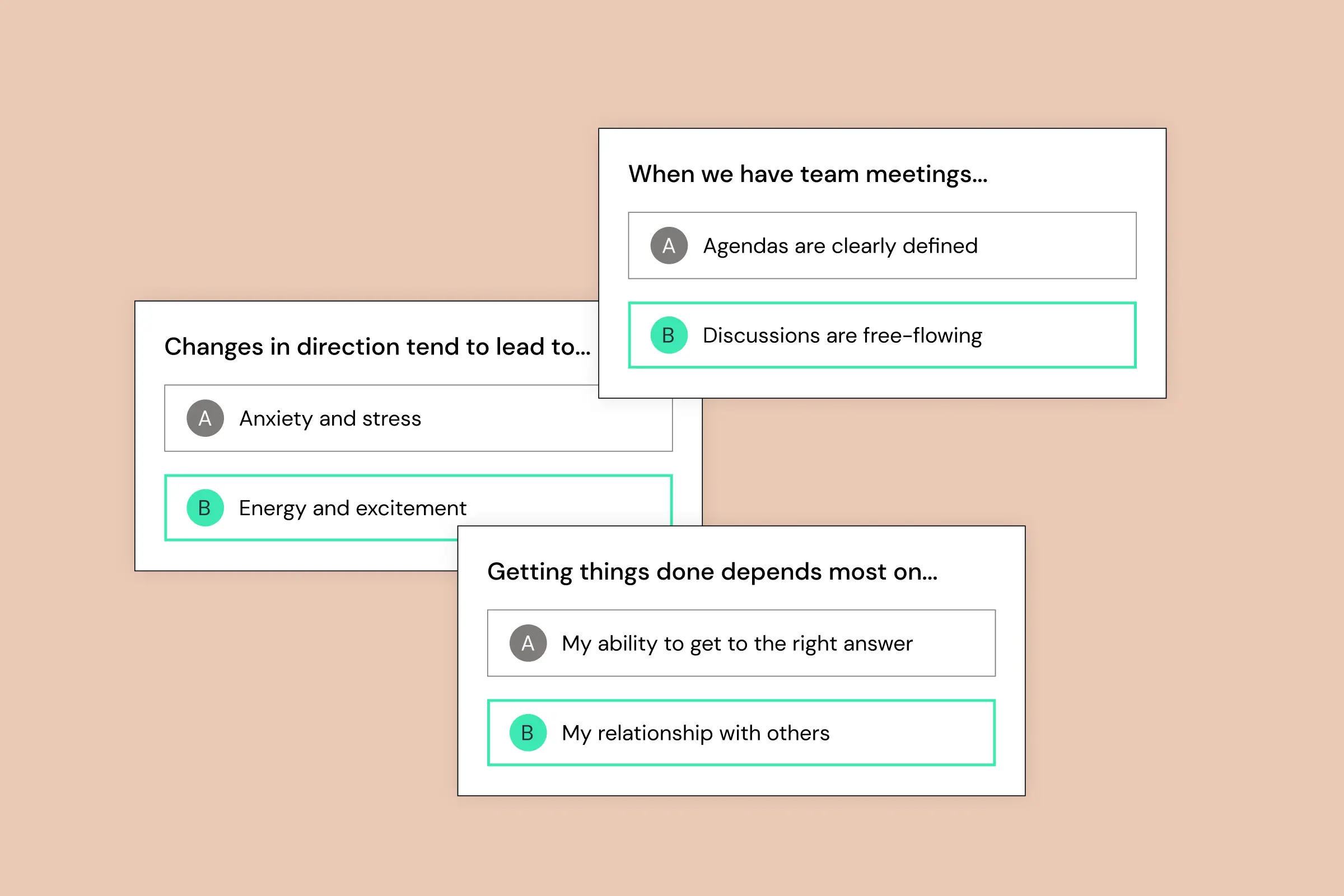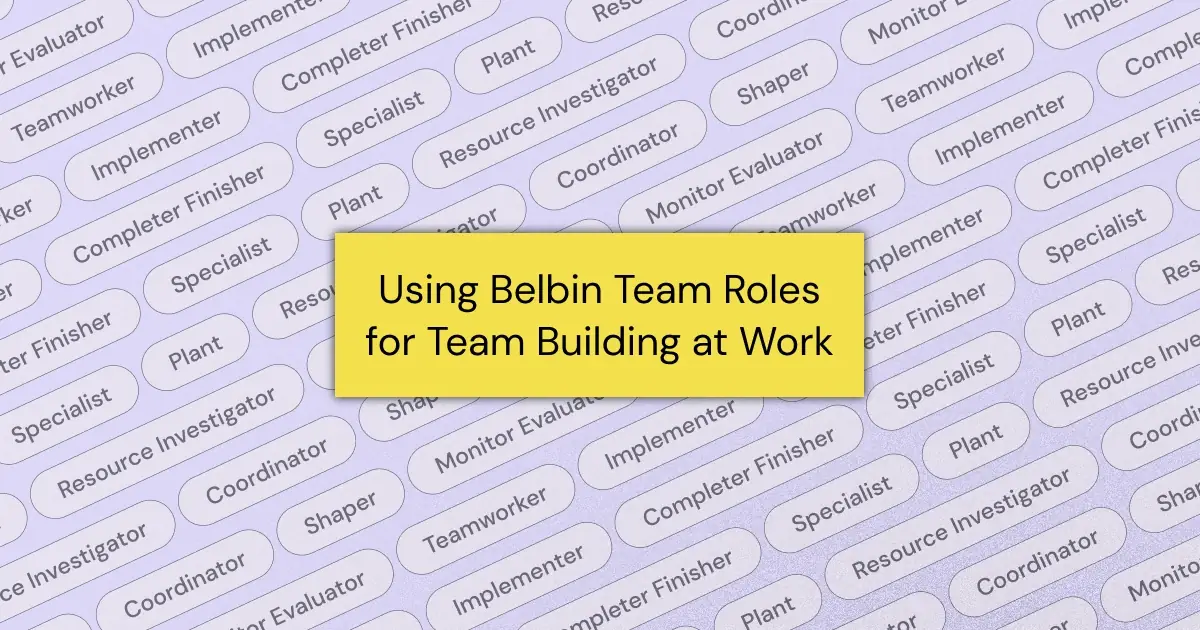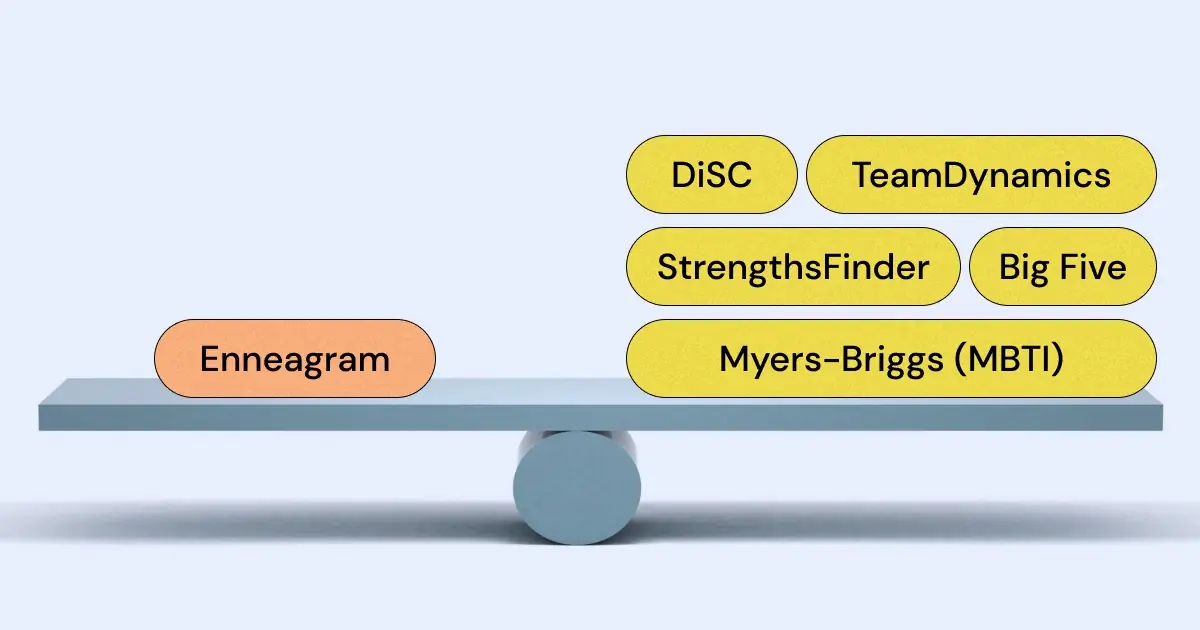In the heart of every successful organization lies a secret weapon: a well-oiled, dynamically cohesive team. Whether it’s the creative buzz of a cutting-edge marketing team, the innovative drive of a tech startup, or the strategic prowess of a consulting firm, the underlying strength of these teams is their ability to work seamlessly together towards a common goal. But how do you unlock this harmonious synergy? Enter the realm of Belbin Team Roles, a revolutionary approach that has transformed the landscape of team building.
Developed by Dr. Meredith Belbin in the 1970s, the Belbin Team Roles model provides a powerful lens through which to understand the diverse puzzle pieces of a team. By identifying the specific roles individuals naturally excel in, from the big-picture thinking of the Plant to the meticulous oversight of the Completer Finisher, Belbin helps teams navigate the complexities of collaboration, ensuring that every member’s strengths are harnessed and every potential gap is filled.
Looking for an alternative to Belbin Team Roles? Check out the 5 best alternatives to Belbin Team Role Inventories.
This blog post aims to explore the intricate world of Belbin's Team Roles and how it can be a game-changer for your team. We’ll dive into the essence of each role, how to decode the results of the Belbin assessment, and innovative ways to bring these insights to life through team-building activities. Moreover, we'll weigh the pros and cons of adopting the Belbin model for team development, and consider why TeamDynamics might just be the superior strategy your team needs in the ever-evolving professional environment.
Join us as we embark on this journey to not just assemble a team that works, but to craft a team that thrives, leveraging the unique talents of each member to achieve unparalleled success.
Navigating the Dynamics of Belbin Team Roles: The Key to a Balanced Team
The essence of a high-performing team lies not just in the collective skills of its members but in how these individuals’ personalities blend to create a dynamic, efficient unit. Dr. Meredith Belbin’s groundbreaking research introduced the world to a concept that would redefine team building: the Belbin Team Roles theory. These roles, each with its unique strengths and potential weaknesses, serve as the building blocks for constructing a balanced, cohesive team. Let’s delve into the specifics of these roles and uncover how they contribute to the success of a team.
Understanding the Nine Belbin Team Roles Examples
- Plant (PL): The creative innovators, Belbin Team Roles Plants are the heart of ingenuity and imagination in a team. They thrive on solving complex problems with out-of-the-box solutions, although they may sometimes seem too absorbed in their world of ideas.
- Resource Investigator (RI): With an unparalleled zest for exploring opportunities and networking, Belbin Team Roles Resource Investigators are the connectors, bringing energy and external insights to fuel the team's fire. They excel in enthusiasm but might lack focus over time.
- Coordinator (CO): True leaders, Belbin Team Roles Coordinators excel in clarifying goals, delegating tasks, and making use of team talents effectively. Their strength lies in communication and leadership, although they can be perceived as manipulative if not careful.
- Shaper (SH): The driving force that pushes the team forward, Belbin Team Roles Shapers are dynamic and highly motivated, with an ability to overcome obstacles passionately. However, their competitive nature can sometimes lead to conflict.
- Monitor Evaluator (ME): Providing critical analysis and strategic insight, Belbin Team Roles Monitor Evaluators are the team’s anchor, offering balanced judgments and ensuring thorough decision-making. Their analytical approach may come off as overly critical or indecisive.
- Teamworker (TW): The glue that holds the team together, Belbin Team Roles Teamworkers excel in fostering team spirit and smoothing over conflicts, ensuring cooperation. While invaluable for their flexibility, they may struggle with decisiveness.
- Implementer (IMP): Reliable and efficient, Belbin Team Roles Implementers turn ideas into action and plans into success. They bring structure and method to the team, though their practicality can sometimes stifle innovation.
- Completer Finisher (CF): Perfectionists at heart, Belbin Team Roles Completer Finishers are focused on delivering tasks to the highest standards, with an eye for detail and a drive for perfection that ensures nothing is overlooked. Their perfectionism, however, can lead to undue stress and reluctance to delegate.
- Specialist (SP): With in-depth knowledge in a specific area, Belbin Team Roles Specialists provide the team with expert advice and skills, ensuring high standards of quality. Their focus on their niche can, however, lead to challenges in broader team engagement.
The Symphony of Roles: Crafting a Cohesive Team
Understanding these roles and how they interact within a team is like conducting a symphony; each role represents a unique instrument, contributing its distinct sound to the harmony of the whole. The key to success lies in balancing these roles, ensuring a blend of creative energy, strategic thinking, and flawless execution. By mapping out the roles present (and absent) in your team, you can identify potential gaps or overlaps in the team's composition, enabling strategic adjustments that enhance performance and collaboration.
In the following sections, we’ll explore how to interpret the Belbin Team Roles results to optimize team dynamics and introduce team-building activities that capitalize on these insights. Stay tuned as we unlock the full potential of your team, transforming individual strengths into collective triumphs.
{{inline-cta}}
Maximizing Team Synergy: Interpreting Belbin Team Roles Results
Once your team has embarked on the journey of discovering their Belbin Team Roles, the next crucial step is to decode these results into actionable insights. Understanding the blend of roles within your team provides a roadmap to harnessing the full spectrum of your team's capabilities. Let’s explore how to interpret these results and translate them into strategies that supercharge your team’s effectiveness.
Decoding the Results: A Step Towards Enhanced Team Dynamics
The Belbin report offers a comprehensive analysis, highlighting each member's preferred team roles along with their strengths and allowable weaknesses. The art of interpretation lies in understanding not just the individual roles but how these roles interact within the team's context:
- Balance and Diversity: Assess the spread of roles across the team. An ideal team encompasses a healthy mix of thinking, action-oriented, and people-focused roles. A team skewed too heavily in one direction might face challenges, such as too many ideas but insufficient action, or efficient execution without innovative thinking.
- Gap Identification: Identify which roles are underrepresented or missing. Every team role serves a purpose, and the absence of certain roles can highlight potential challenges or areas for development.
- Overlaps and Dynamics: Consider the dynamics between overlapping roles. Multiple team members with similar strong roles can lead to competition or redundancy unless managed well to promote synergy.
Strategic Application: Building a High-Performing Team
With a clear understanding of your team's composition, you can strategically align tasks, responsibilities, and projects to suit individual strengths, thereby enhancing productivity and satisfaction. Here's how:
- Task Allocation: Assign roles and tasks based on individuals’ dominant Belbin roles, ensuring each task plays to a team member’s strengths.
- Team Composition: For new projects, compose your team with a balance of roles in mind, aiming for a comprehensive mix that covers all aspects of the project lifecycle.
Ideas for Belbin Team Roles Team Building Activities
Transforming insights into action, here are some tailored activities that leverage the diversity of Belbin Team Roles to foster understanding and collaboration:
- Role-Play Challenges: Create scenarios where each member assumes a role different from their own. This builds empathy and appreciation for the various contributions within the team.
- Strengths Spotlight: Host a workshop where team members present on how they have successfully leveraged their Belbin role in a work context, sharing insights and strategies.
- Project Simulation: Run a mini-project where team roles are intentionally aligned or misaligned, followed by a debrief session to discuss the impact of role diversity on project outcomes.
The Path to Team Excellence
Understanding and applying Belbin Team Roles is an ongoing journey toward achieving a balanced, high-performing team. Regular check-ins and discussions about role dynamics can help in fine-tuning team composition and addressing any emerging challenges. By embracing the unique strengths of each team member, leaders can create an environment where everyone feels valued and engaged, propelling the team toward collective success.
Weighing the Balance: Belbin Team Roles Advantages and Disadvantages in Team Building
In the quest for the ultimate team-building strategy, the Belbin Team Roles model stands out as a beacon for many organizations. Its approach to understanding team dynamics has revolutionized how teams are formed, developed, and led. However, like any methodology, it comes with its own set of advantages and challenges. By exploring these, we can also uncover why TeamDynamics might offer an even more flexible and comprehensive solution for today’s diverse and fast-paced work environments.
Advantages of Belbin Team Roles
- Enhanced Self-Awareness and Mutual Understanding: One of the most significant benefits of the Belbin model is the insight it provides into individuals’ working styles and how these styles complement each other within a team. This awareness fosters mutual respect and understanding, paving the way for smoother collaboration.
- Strategic Team Composition: Belbin’s detailed analysis allows team leaders to assemble teams with a balanced mix of roles, ensuring that all critical aspects of team performance are covered, from idea generation to execution.
- Targeted Development Opportunities: By highlighting individual and collective strengths and weaknesses, the Belbin model offers clear directions for personal and team development, helping members to focus on areas that will most improve team cohesion and efficiency.
Challenges and Considerations
- Risk of Pigeonholing: While categorizing team members into specific roles can be enlightening, there's a danger of pigeonholing individuals, potentially limiting their growth and contributions outside their identified roles.
- Dynamic Team Needs: Teams evolve, and the initial balance of roles may need to adjust as projects progress and objectives change. The static nature of initial assessments may not fully capture these evolving needs.
- Cost and Accessibility: Implementing the Belbin model, especially across larger organizations, can entail significant costs, from purchasing assessment licenses to training facilitators.
Introducing TeamDynamics: A Modern Alternative
While the Belbin Team Roles model offers valuable insights, TeamDynamics emerges as a versatile tool tailored to address the modern workplace's complexity and fluidity. Here’s why TeamDynamics might be a better fit for your team:
- Broadens Participation: Instead of confining individuals to specific roles, TeamDynamics encourages a more holistic understanding of the team's behaviors, fostering a culture of continuous learning and adaptability.
- Adaptable to Change: TeamDynamics focuses on the dynamic aspects of team interactions, offering tools and insights that adapt to the team's evolving needs and challenges.
- Cost-Effective Solution: Designed with accessibility in mind, TeamDynamics provides a scalable solution that fits a range of budgets, making comprehensive team development accessible to more organizations.
Crafting Future-Ready Teams
Choosing the right framework for team building is crucial in today's fast-paced work environment. While Belbin Team Roles have proven effective in many contexts, TeamDynamics offers a fresh, adaptable approach that meets the changing needs of teams and organizations. By embracing a model that values flexibility, inclusivity, and continuous growth, leaders can ensure their teams are not just prepared for today’s challenges but are also future-ready.
Transforming Team Building for the Future
In the journey toward building high-performing teams, the tools and methodologies we choose can make all the difference. Through our exploration of Belbin Team Roles, we've uncovered valuable insights into assembling balanced teams, leveraging individual strengths, and fostering a collaborative environment. However, the evolution of workplace dynamics demands even more adaptable, inclusive, and scalable solutions. This is where TeamDynamics steps in, offering a new horizon in team development.
Embracing the Dynamics of Change
The world of work is constantly shifting, with new challenges and opportunities emerging at an unprecedented pace. In this ever-changing landscape, the static nature of traditional team roles can limit a team's potential to adapt and grow. TeamDynamics, with its focus on fluidity and resilience, empowers teams to navigate these changes successfully, ensuring they remain cohesive, flexible, and innovative.
The Power of Inclusivity and Growth
TeamDynamics goes beyond the identification of static roles, advocating for a culture where every team member's contributions are valued and their potential for growth is recognized. By embracing a broader perspective on team dynamics, it encourages continuous learning and adaptation, ensuring that teams are not just prepared for today's challenges but are also equipped to tackle future endeavors.
Why TeamDynamics Could Be Your Best Choice
As we've seen, while Belbin Team Roles provide a solid foundation for understanding team composition, TeamDynamics offers a comprehensive framework that aligns more closely with the needs of modern teams. Its adaptable approach ensures that your team remains agile, engaged, and ready to excel in a competitive landscape. For leaders looking to foster a culture of innovation, collaboration, and sustained performance, TeamDynamics presents a compelling option.
Moving Forward with Confidence
The path to exceptional team performance is multifaceted, requiring a deep understanding of individual and collective strengths, a commitment to ongoing development, and the flexibility to adapt to new challenges. As we conclude our exploration, it's clear that the choice of team-building methodology can significantly influence a team's trajectory. Whether you're at the helm of a tech startup, leading a creative marketing team, or driving a consulting team towards excellence, embracing the right tools—like TeamDynamics—can set the stage for unparalleled success.
Your Next Step
As you reflect on the future of your team, consider how the insights and strategies discussed here can be applied within your organization. Are you ready to transition to a more dynamic, inclusive approach to team building? Explore TeamDynamics further and take the first step towards transforming your team's potential into reality.




.png)










































